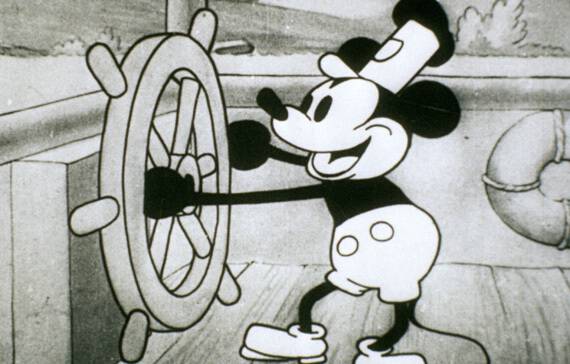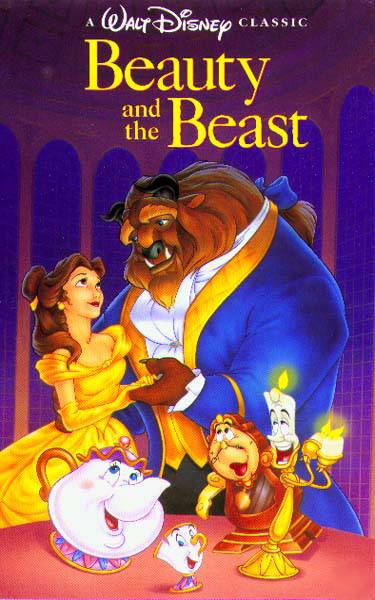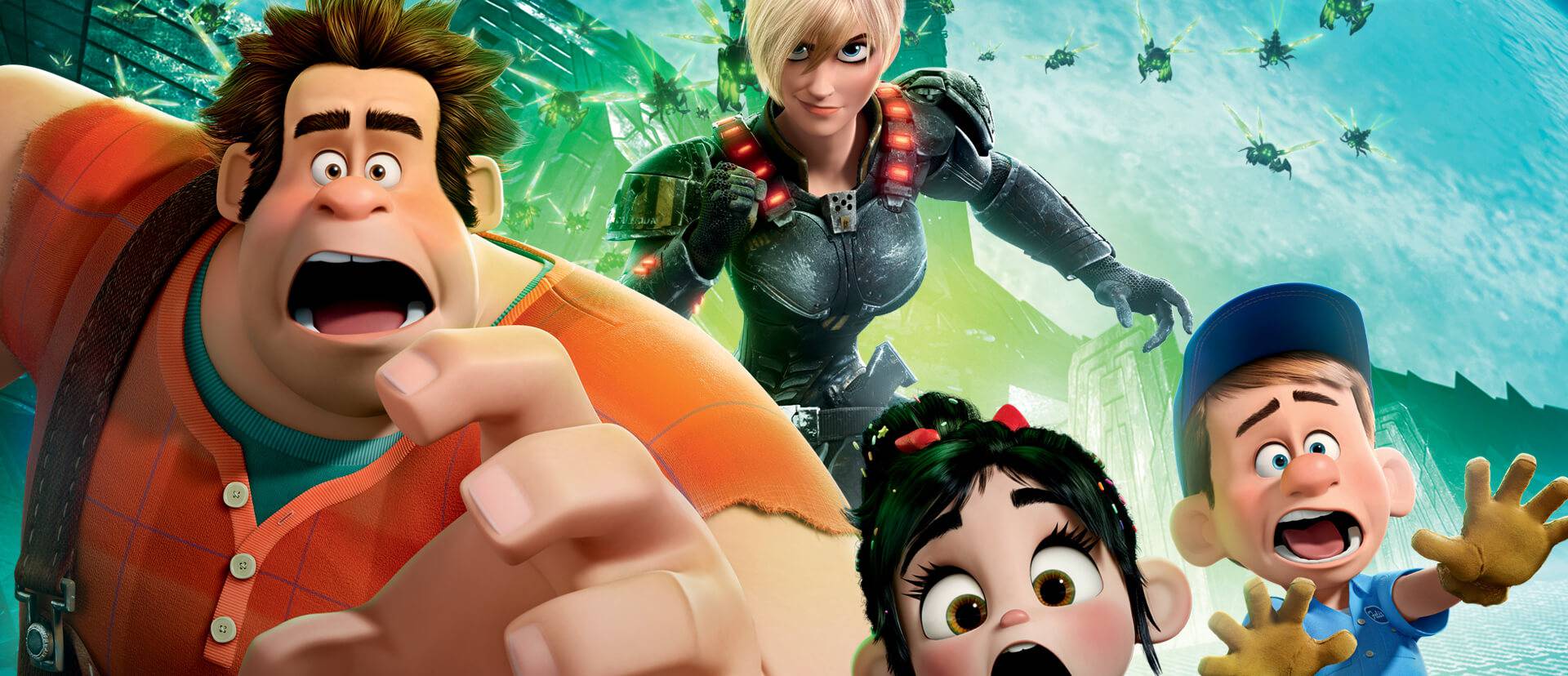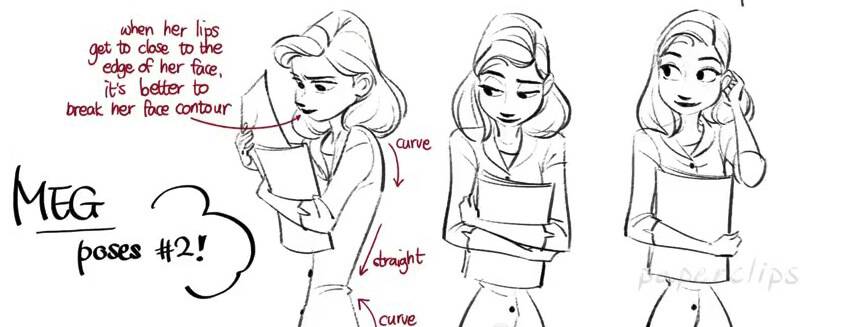
Lets take a look at the background. Walt Disney moved to Hollywood in the early 1920s to create live-action feature films with actors, scripts and high production values. It was by circumstance that he found himself setting up an animation studio, though he considered himself a business man and filmmaker, not an animator. He hired others who could animate for him, some of whom became affectionately known as the ‘nine old men’.
He then directed the first Hollywood animated feature film, 1937’s Snow White and the Seven Dwarfs, setting a precedent for future animation. Walt died leaving behind a huge legacy, having created the company that started with simple, soundless black and white shorts and finished with full-colour animated feature films. The Disney name became synonymous with 2D, handcrafted ‘magic’.
 After
Walt’s death, filling his shoes and keeping his legacy alive proved a
daunting task. The animation department declined once the ‘nine old men’
each went into retirement. New Disney talent struggled to fill the
void against the corporate side of Disney, which had became
disillusioned with animation; The future was live-action and animation
had many ups and downs. The years of stagnation ultimately peaked with
the release of The Black Cauldron which failed to live up to the standards of yesteryear, and people began to question the need for Disney feature Animation.
After
Walt’s death, filling his shoes and keeping his legacy alive proved a
daunting task. The animation department declined once the ‘nine old men’
each went into retirement. New Disney talent struggled to fill the
void against the corporate side of Disney, which had became
disillusioned with animation; The future was live-action and animation
had many ups and downs. The years of stagnation ultimately peaked with
the release of The Black Cauldron which failed to live up to the standards of yesteryear, and people began to question the need for Disney feature Animation.Michael Eisner, Frank Wells and Jeffrey Katzenberg were brought into the ailing company by Roy Disney in 1984 (to replace Walt’s replacement Ron Miller) and formed the much needed Dream Team; they collectively became what ‘Walt Disney’ was. It was Roy Disney and Jeffrey Katzenberg who decided to stick with Walt’s animation, keeping the art alive with his literal vision; good storytelling with solid characters, drawn by artists eager to get the job done. Pushed hard to release a high-quality film each year, artists and animators succeeded under their new supervision and Disney enjoyed a renaissance between 1988 and 1995.
 Following
the untimely death of Frank wells, however, a split in management
forced Jeffrey Katzenberg to leave and Dreamworks was born. Critically
speaking, Pocahontas, Mulan, Hunchback and Hercules didn’t live up to the high standards set by previous features such as The Little Mermaid, Beauty and the Beast, Aladdin and The Lion King. But why not? The films still followed a proven formula and Disney had more money than ever before.
Following
the untimely death of Frank wells, however, a split in management
forced Jeffrey Katzenberg to leave and Dreamworks was born. Critically
speaking, Pocahontas, Mulan, Hunchback and Hercules didn’t live up to the high standards set by previous features such as The Little Mermaid, Beauty and the Beast, Aladdin and The Lion King. But why not? The films still followed a proven formula and Disney had more money than ever before. In the early 2000s, Disney became rattled by the money studios like Blue Sky, Pixar and Dreamworks were making above them. Disney flooded its brand, releasing straight-to-video sequels in an attempt to solidify its kingly status.
In March 2002, Disney fired their 2D feature animation staff whom they had shared success with 10 years prior. Disney Studios didn’t renew its distribution deal with Pixar either, instead they boasted about their new CG department and released Chicken Little and Meet the Robinsons. Their plan didn’t exactly work and Disney ended up purchasing Pixar for $7.4 billion almost as if it was their plan B all along. Pixar’s top Director John Lasseter took over as chief creative officer for Disney, hiring all the 2D animators back and
helping set Disney on the right path again. Michael Eisner left and The Disney legacy became 2D hand-crafted animation again.
But is 2D really Walt Disney’s Legacy?
In 2012, Wreck-it-Ralph was released and it was a fun movie. Not just funny, but a FUN movie; it captivated the audience with playful art and imagery, stunning design and a charming story. Sound familiar? Well it’s the formula that Walt Disney established all those years ago. It’s what Pixar was inspired to follow and Dreamworks, LAIKA, Aardman and Blue Sky all emulate. A good story inspires good concepts, good art, which equates to a good movie. As the credits proved, Wreck-it-Ralph would have been just as good in 2D as it was in CG. Every animation lecturer will tell you “Good storytelling makes a film, no matter what the medium”.
2D animation certainly isn’t dead with Bob Iger’s announcement, just not in production. Recent features The Princess and the Frog and Winnie the Pooh were both critically acclaimed by reviewers and audiences, but they didn’t make the same money as Bolt or Tangled. This can be put down to the times; 2D is traditional, loved by audiences for its familiarity but with the novelty of technology, larger audiences seem more curious to see how far CG is developing than how 2D is faring after 75 years. Audiences want developed visuals every time they go to the cinema. There is still scope for 2D to develop, it can offer just as many interesting visuals as any medium.
A feature film that uses the same CG technique as the Oscar winning short Paperman hasn’t been announced, but it would certainly please an audience. Paperman really did something new and beautiful; and not just with style, it played on the principles that Disney established; beautiful visuals, charming stories and the often-quoted “Disney magic!”
We sympathise with traditionalists who had hoped Disney would shift focus back to 2D, leaving CG digital animation in the safe hands of Pixar, but if anything it has taken much needed pressure off Disney’s shoulders. All Disney needs to do now is release a film once in a while, a good film, a fun film, to prove they’ve still ‘got it’. After a few years of pioneering, giving the paper and pencil a needed break, maybe they will find a story that will suit the traditional medium again.
Disney is not planning any more 2D hand-drawn feature animation for now, focusing instead on its many arms of global entertainment. This gives the audience a gap of at least five years for the chance to see another traditionally drawn Disney film. But the positives should be clear; Walt the business man would be happy, Walt the filmmaker would be happy and, finally, Walt the pioneer would be very happy.
As for the artists at Walt Disney Studios, I hope they are happy; it’s not like CG is any easier.
Article Source....



 Different kind of people work in 3-D: There
are those who model the shape and volume of objects (an object can be anything
you want-a character, an animal, furniture, etc.), others paint textures,
animate and do the lighting.
Different kind of people work in 3-D: There
are those who model the shape and volume of objects (an object can be anything
you want-a character, an animal, furniture, etc.), others paint textures,
animate and do the lighting.